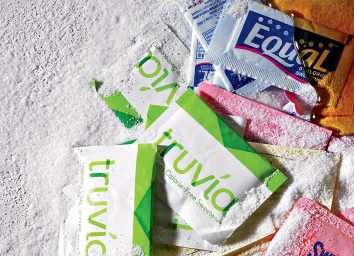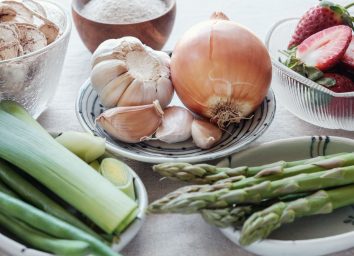The Best Low-FODMAP Foods (and What Foods to Avoid)
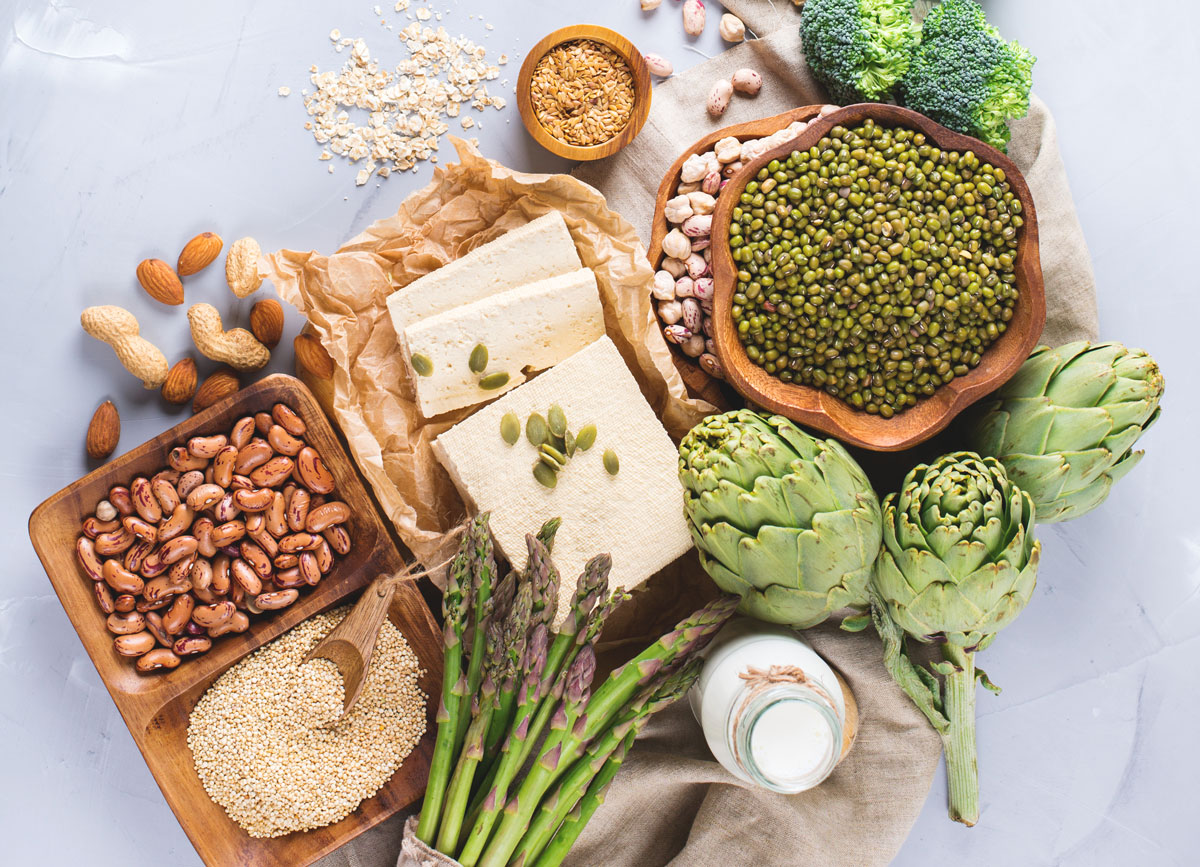
These days, Keto and Paleo are dominating the dietary world. But before these behemoths rolled onto the scene, the low-FODMAP diet was making waves of its own—and it's still going strong as a sound dietary option for people who are struggling with gastrointestinal issues.
For some people, a low-FODMAP may help you find digestive relief. With the help of industry experts, such as doctors and dietitians, we put together a list of the best and worst foods for people looking to embrace a low-FODMAP diet. Before we dive in, let's start with what FODMAPs are.
What Are FODMAPs?
"FODMAPs is an acronym that stands for Fermentable Oligosaccharides, Disaccharides, Monosaccharides, and Polyols," says Tania Dempsey, MD, founder of Armonk Integrative Medicine.
"These are four different categories of poorly absorbed carbohydrates and sugars that are found in a variety of foods, like fruits, vegetables, grains, and milk," she adds.
One category of FODMAPS, oligosaccharides, are not absorbed in anyone and include two subgroups: fructans and galacto-oligosaccharides (GOS).
Why Might Some People Want to Avoid FODMAPS?
Why does it matter that these compounds may be poorly absorbed? "When these non-absorbed sugars pass through the small intestine and enter into the colon, they are fermented by the bacteria there," Dempsey explains. "This fermentation process produces gas, which causes bloating and pain. It can also cause water to move in and out of the colon, leading to diarrhea, constipation, or both."
Eating too many high-FODMAP foods may also lead to feeling full even after eating a relatively small meal, says Dr. Richard Honaker, MD, Chief Medical Officer at Your Doctors Online.
While this process of fermentation and gas production happens in everyone when they consume FODMAPs, these symptoms may be especially pronounced in people with gastrointestinal issues such as irritable bowel syndrome (IBS), Crohn's disease, or small intestinal bacterial overgrowth (SIBO).
How Can a Low-FODMAP Diet Help?
As you can imagine, a low-FODMAP diet is often adopted by people who are struggling with gastrointestinal issues including IBS and SIBO. Because a low-FODMAP diet is similar to an elimination diet, some people may also experiment with this diet if they're experiencing mysterious bloating or suspect they might be dealing with a food intolerance and are trying to identify the culprit.
"Typically a FODMAP diet is initiated for eight weeks," Dempsey explains, "and then patients are encouraged to try adding back one food at a time to see if they can isolate which foods causes the most symptoms. If that food is found to be problematic, then it should be eliminated long term."
What to Know Before Starting a Low-FODMAP Diet
While the low-FODMAP diet won't necessarily cure gastrointestinal issues, it can make the symptoms significantly more manageable.
Prior to adopting a low-FODMAP diet, it's important to consult a doctor and perhaps seek out the guidance of a trained professional such as a Registered Dietitian, says Lisa Samuels, RD, founder of The Happie House. They'll be able to assist you in making the healthiest choices for your body and needs.
Additionally, be aware that you may need to work a little harder to consume enough fiber per day. Because many FODMAPS are high-fiber foods, "the major risk of the FODMAP diet is not getting enough fiber," Samuels says. "Be sure to still get a variety of colorful foods on your plate to keep your colon healthy and avoid constipation."
Potential Risks and Side Effects of a Low-FODMAP Diet
Whether there are other risks associated with the FODMAP diet is a matter of debate.
"Some people believe that eliminating FODMAPs is very restrictive and should not be followed lifelong," Demsey says. The concern is that this could lead to nutritional deficiencies as many foods that are high in FODMAPs are rich in prebiotics: a class of insoluble dietary fiber that passes through the gut undigested and stimulates the growth of "good" bacteria in the large intestine.
"They suggest that after a period of elimination, the foods should be reintroduced one at a time and the assumption is that patients will become more tolerant of those foods with time. The problem is that many patients continue to have the underlying issue, like persistent SIBO, that predispose them to having difficulty tolerating FODMAP foods, sometimes for life."
Demsey adds, "since there are plenty of healthy, nutrient-dense food options that are low in FODMAPs, the diet is perfectly safe to be continued indefinitely, especially if a patient feels that the diet is helpful for them."
Finally, Samuels stresses that it's important to be patient while undertaking this diet. "It may take some time to understand which foods are affecting you in negative ways," she says. So be open to a little trial and error in the pursuit of better health.
The Best and Worst FODMAP Foods
Starting a low-FODMAP diet on your own can be challenging because information about this diet varies widely. "There appears to be considerable inconsistencies between various lists that report high- and low-FODMAP foods," Dempsey says "A food may be listed as low-FODMAP on one list but high on another, and this can be very confusing."
This is just one more reason to consult a medical professional while undertaking the diet. And it also speaks to the importance of listening to your body. "The individual patient will need to determine how they react to [a] particular food," Dempsey says.
All that being said, here's a general overview of some of the best and worst FODMAP foods. This list was compiled with input from Dempsey, Honaker, Samuels, and Monash University.
Vegetables
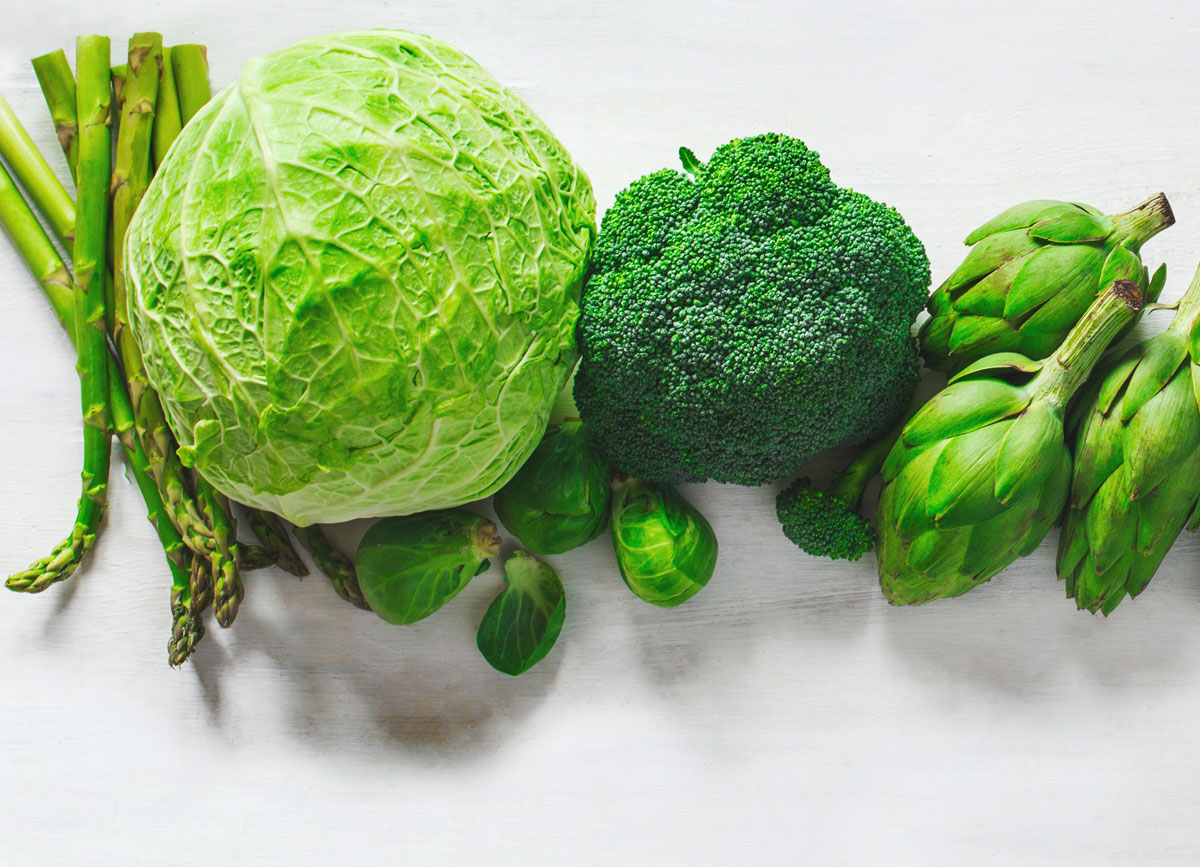
Some vegetables contain one or multiple FODMAPs (such as monosaccharides and oligosaccharides), which is why not all vegetables are created equal for people who are looking to follow a low-FODMAP diet. However, eating plenty of vegetables is essential for maintaining adequate nutrition and overall health, and it's important to embrace as many vegetables as possible even while consuming a low-FODMAP diet. We've made it easy with the lists below.
High-FODMAP Vegetables
- Artichokes
- Asparagus
- Broccoli
- Cauliflower
- Green peas
- Leeks
- Mushrooms
- Onions
Low-FODMAP Vegetables
- Bok choy
- Carrots
- Corn
- Cucumbers
- Green beans
- Kale
- Leafy green vegetables
- Potatoes
- Radishes
- Root vegetables
- Spinach
- Squash
- Yams
- Zucchini
Fruit
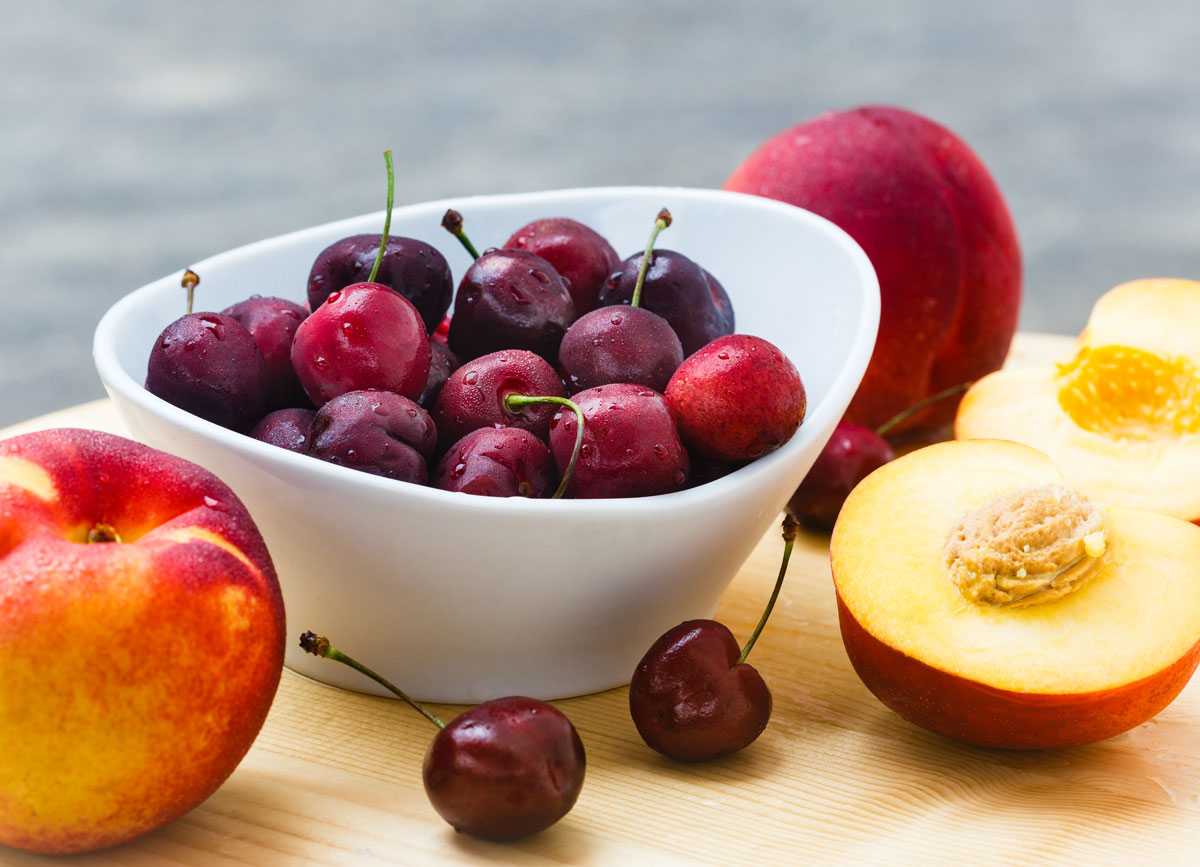
Dempsey says that many fruits contain FODMAPs in the form of fructose, which is a monosaccharide. Other high-FODMAP fruits are high in polyols (sugar alchohols), such as sorbitol. But not all fruits have high levels of FODMAPs. As with vegetables, it's important to pick and choose fruits carefully so you can maintain adequate nutrition while also eating a diet low in FODMAPs.
High-FODMAP Fruit
- Apples
- Cherries
- Dried fruit (e.g. prunes)
- Figs
- Mango
- Nectarines
- Peaches
- Pears
- Plums
- Watermelon
Low-FODMAP Fruit
- Bananas
- Bell peppers
- Berries (e.g. blueberries and strawberries)
- Cantaloupe
- Citrus fruits (e.g. grapefruit, lemons, limes, oranges)
- Grapes
- Kiwi
- Pineapple
- Tomatoes
Dairy
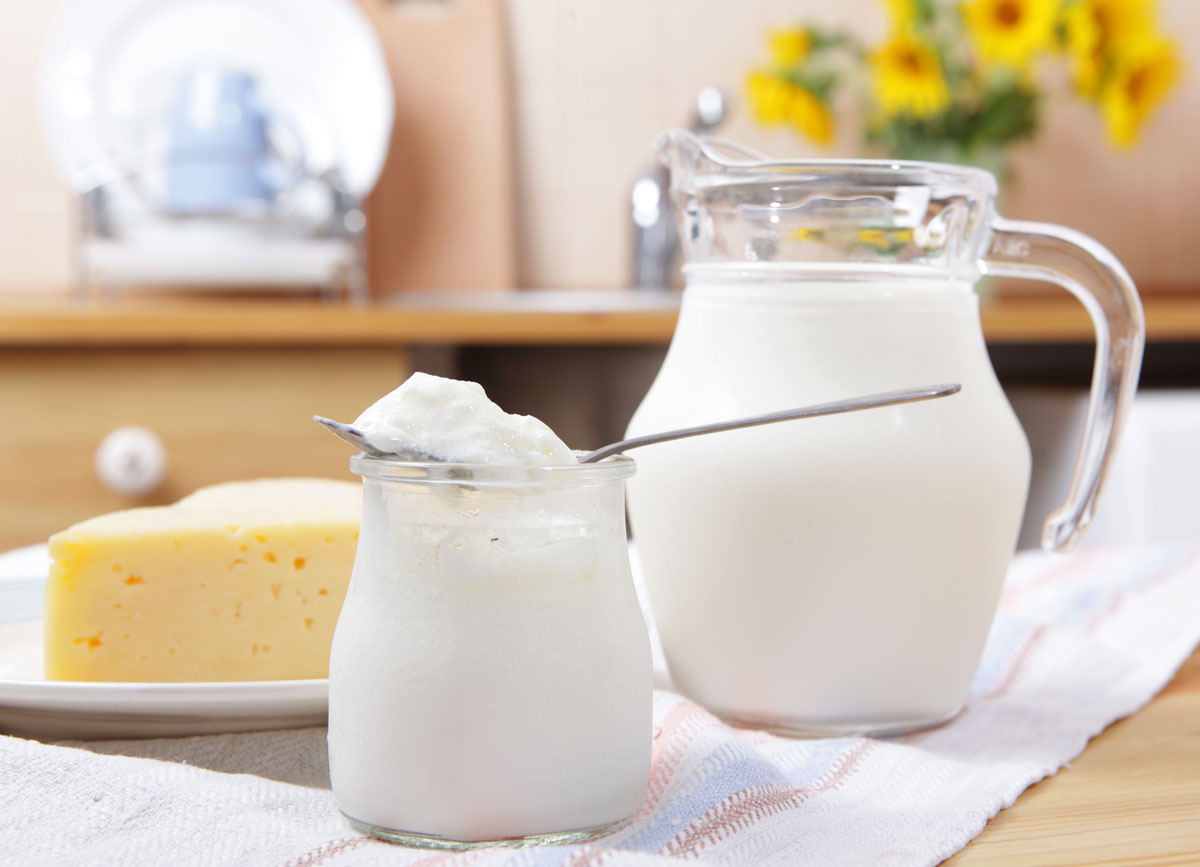
Lactose is a disaccharide, Dempsey says, which explains why many conventional dairy products qualify as high-FODMAP. Basically, the lower the lactose content, the more likely a dairy product (or dairy alternative) is likely to make the low-FODMAP cut. That's why you'll see that cottage cheese qualifies as a high FODMAP, while cheeses with a smaller lactose content (such as brie and feta) qualify as low-FODMAP. You'll see that aged cheeses are usually ok to consume on a low-FODMAP diet as they tend to have lower levels of water-soluble lactose.
High-FODMAP Dairy
- Cow's milk
- Goat's milk
- Ice cream
- Sheep's milk
- Soft cheese (e.g. cottage cheese)
- Yogurt
Low-FODMAP Dairy/Dairy Alternatives
- Almond milk
- Brie cheese
- Camembert cheese
- Feta cheese
- Aged, hard cheeses
- Lactose-free milk
- Soy milk (derived from soy protein)
Protein Sources (Meat, Legumes, Seafood)
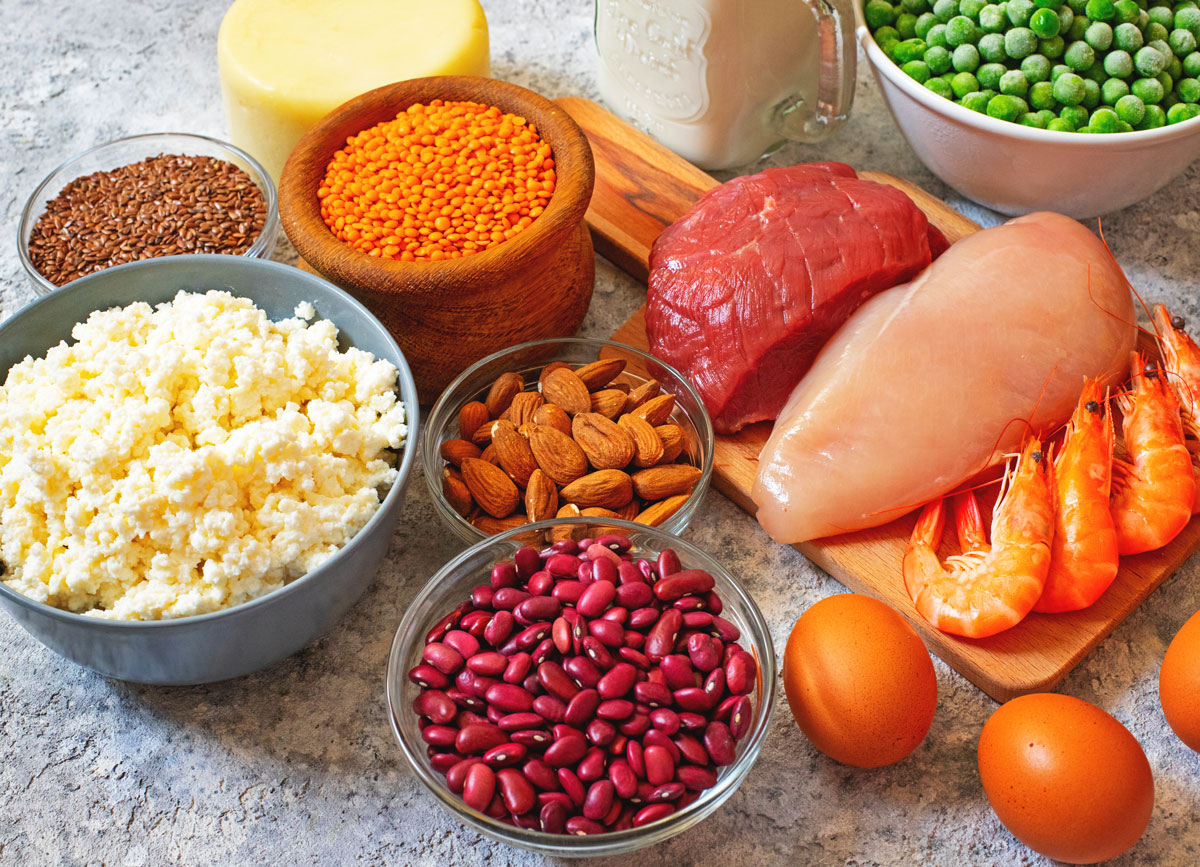
Legumes tend to contain high levels of galacto-oligosaccharides, Dempsey says, which is why so many beans and other legumes qualify as high-FODMAP. Additionally, any protein sources that incorporate garlic, onions, or wheat are a no-go because they contain additional oligosaccharides via fructans. In contrast, plain protein sources such as eggs, poultry, or unprocessed meats generally get the green light.
High-FODMAP Protein Sources
- Baked beans
- Black-eyed peas
- Butter beans
- Chickpeas
- Kidney beans
- Lentils
- Processed meats (e.g. sausage)
- Protein add-ons and flavorings such as bread crumbs, gravies, marinades, and sauces (particularly those that contain garlic and/or onion)
- Soybeans
- Split peas
Low-FODMAP Protein Sources
- Eggs
- Low-FODMAP dairy (see above)
- Poultry
- Plain, unprocessed meat
- Seafood
- Tofu (firm)
Grains, Breads, Cereals, and Baked Goods
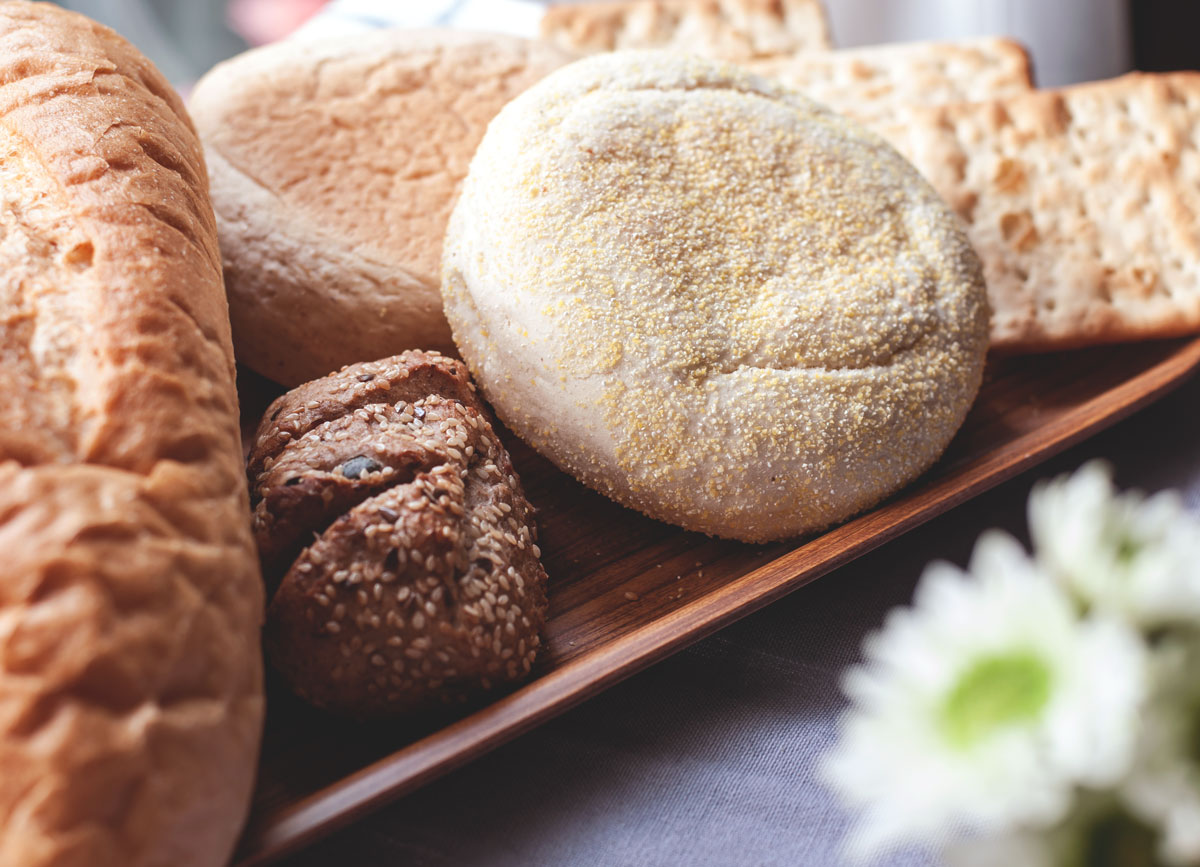
We've grouped these categories together because they tend to share something in common: They contain barley, wheat, or rye. And according to Honaker, anything made with any of these ingredients qualifies as high-FODMAP. That can include a huge variety of foods, such as baked goods, breads, cereals, and pastas.
But don't fear: There are plenty of delicious breads, cereals, and so on that are made from something other than wheat and other high-FODMAP grains. (Just ask the nearest person with celiac!) For instance, you might try gluten-free, overnight oats soaked in almond milk or enjoy corn-based pasta (like polenta) in lieu of conventional products.
High-FODMAP Grains, Breads, Cereals, and Baked Goods
- Barley-based products
- Rye-based products
- Wheat-based products
Low-FODMAP Grains, Breads, Cereals, and Baked Goods
- Corn-based products (e.g. corn flakes or corn pasta)
- Oat-based products
- Quinoa-based products
- Rice-based products (e.g. rice cakes)
- Sourdough spelt bread (and other breads that are free of barley, rye, and wheat)
Sweeteners and Sweets
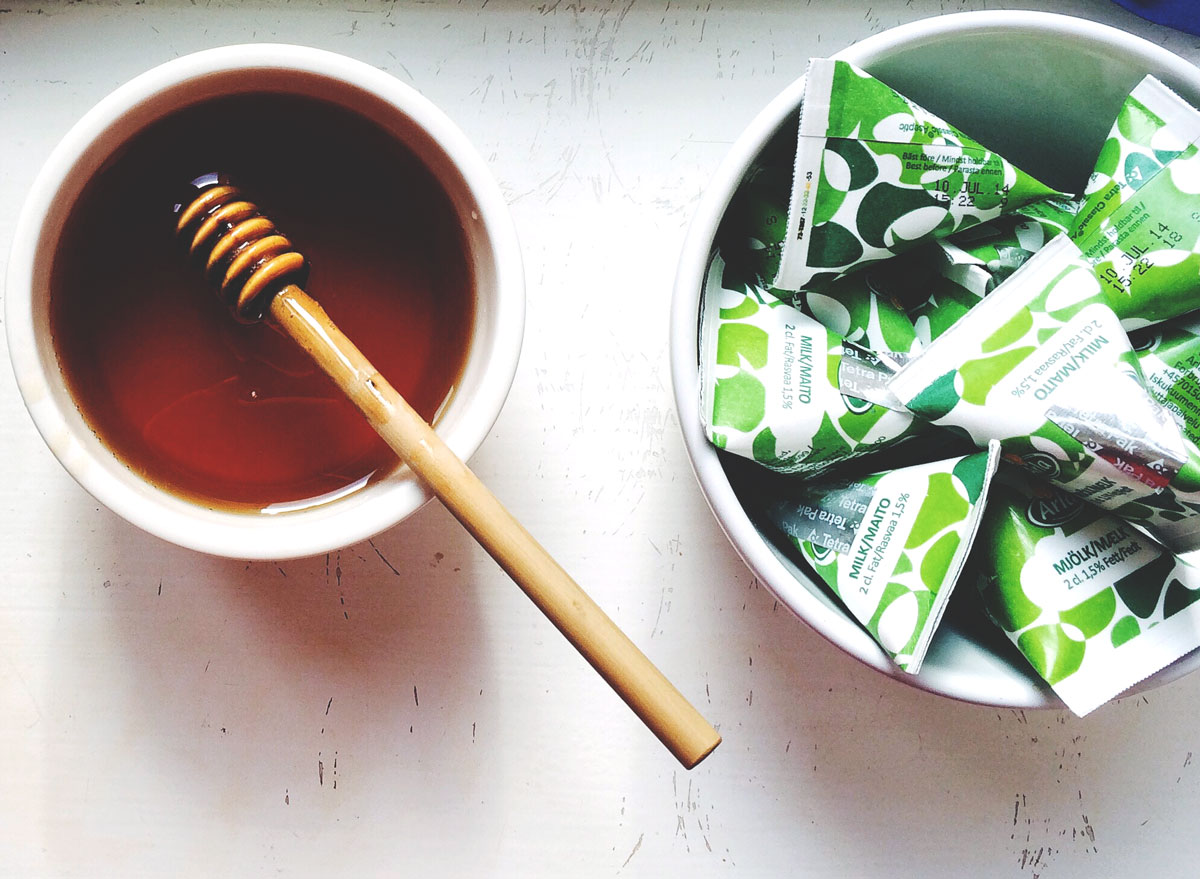
Many sweeteners (especially those found in sugar-free products) contain FODMAPs in the form of polyols, Dempsey says. But that doesn't mean you'll have to sacrifice your sweet tooth to go on a low-FODMAP diet. A number of natural sweets and sweeteners are a-okay on the FODMAP scale.
High-FODMAP Sweeteners and Sweets
- Artificial sweeteners
- High fructose corn syrup
- Honey
- Maltitol
- Sorbitol
- Sugar-free candy
- Xylitol
Low-FODMAP Sweeteners and Sweets
- Dark chocolate
- Maple syrup
- Monk fruit
- Pure stevia
- Rice malt syrup
Nuts and Seeds
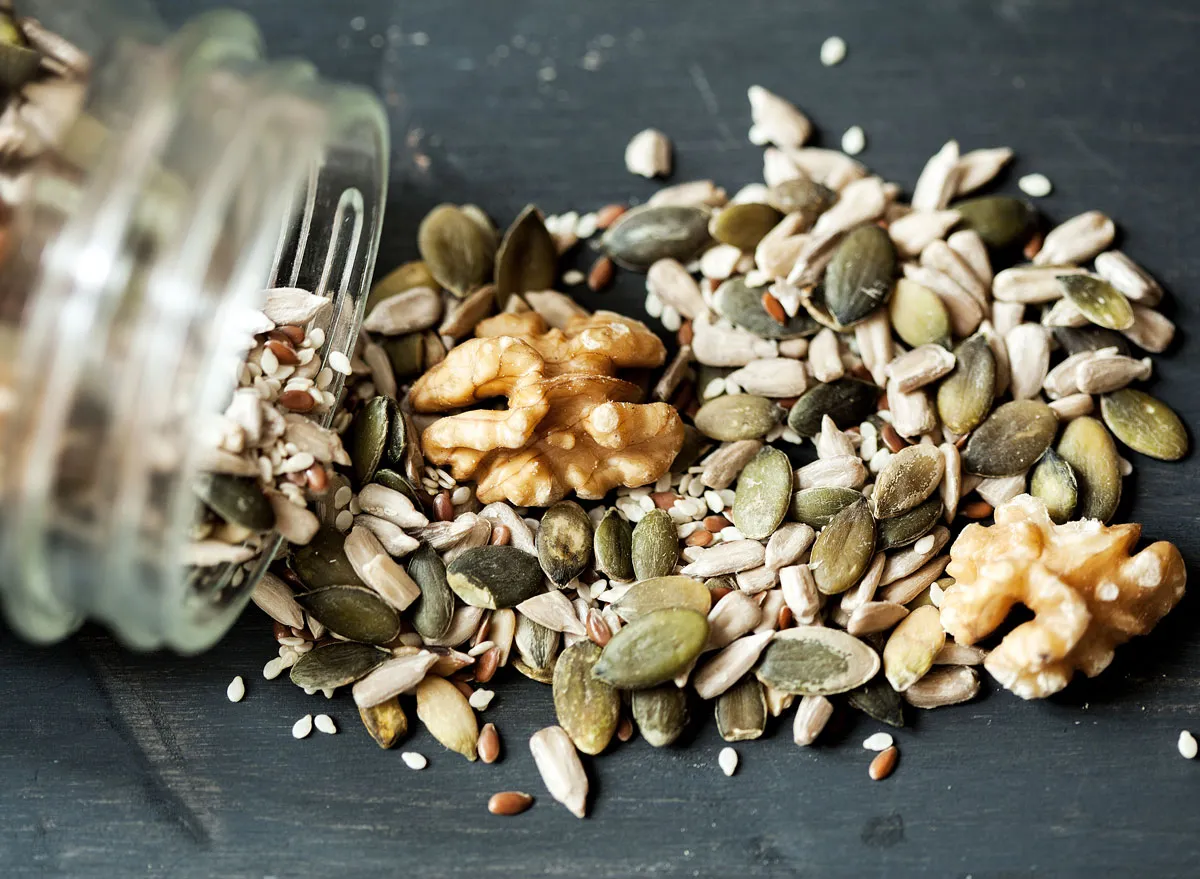
Fats are generally considered "safe" on a low-FODMAP diet, which may explain why many nuts and seeds qualify as low-FODMAP. That being said, Dempsey says it's a good idea to steer clear of cashews and pistachios, which both have high levels of the galacto-oligosaccharides. (In fact, the presence of GOS is also what makes cashews and pistachios a good source of prebiotics, according to Monash University.) Swap in any of the low-FODMAP nuts and seeds instead.
High-FODMAP Nuts and Seeds
- Cashews
- Pistachios
Low-FODMAP Nuts and Seeds
- Macadamia nuts
- Peanuts
- Pumpkin seeds
- Walnuts
Beverages

When choosing low-FODMAP beverages, take everything you've learned above and apply it to the drink in question. If the beverage contains any high-FODMAP ingredients from the lists above, then it's probably best to steer clear.
On the other hand, if it's made with low-FODMAP ingredients, that's a good sign it's unlikely to provoke gastrointestinal issues. And when in doubt, you can always play it safe with good old H2O!
High-FODMAP Beverages
- Beer
- Beverages that are sweetened with high-FODMAP sweeteners
- Fruit juices (particularly those made from high-FODMAP fruits)
- Milk (cow, goat, or sheep)
- Sodas that contain high fructose corn syrup
Low-FODMAP Beverages
- Lactose-free milks (e.g. almond milk)
- Beverages sweetened exclusively with low-FODMAP sweeteners
- Tea
- Water
Summary
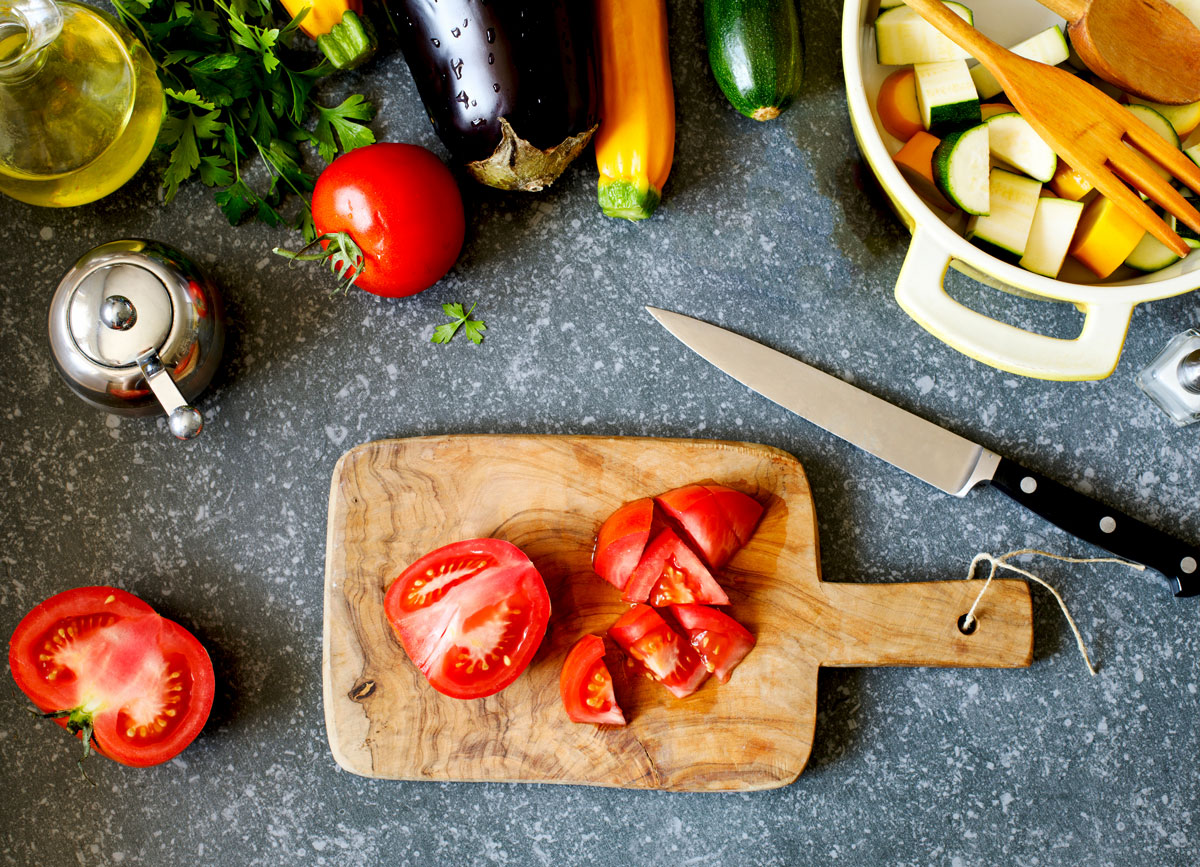
As you can see, following a low-FODMAP diet takes some advance planning and a lot of trial and error. But for folks who are dealing with gastrointestinal issues and under the advisement of a professional, the effort may pay off in the form of a healthier, happier gut.

